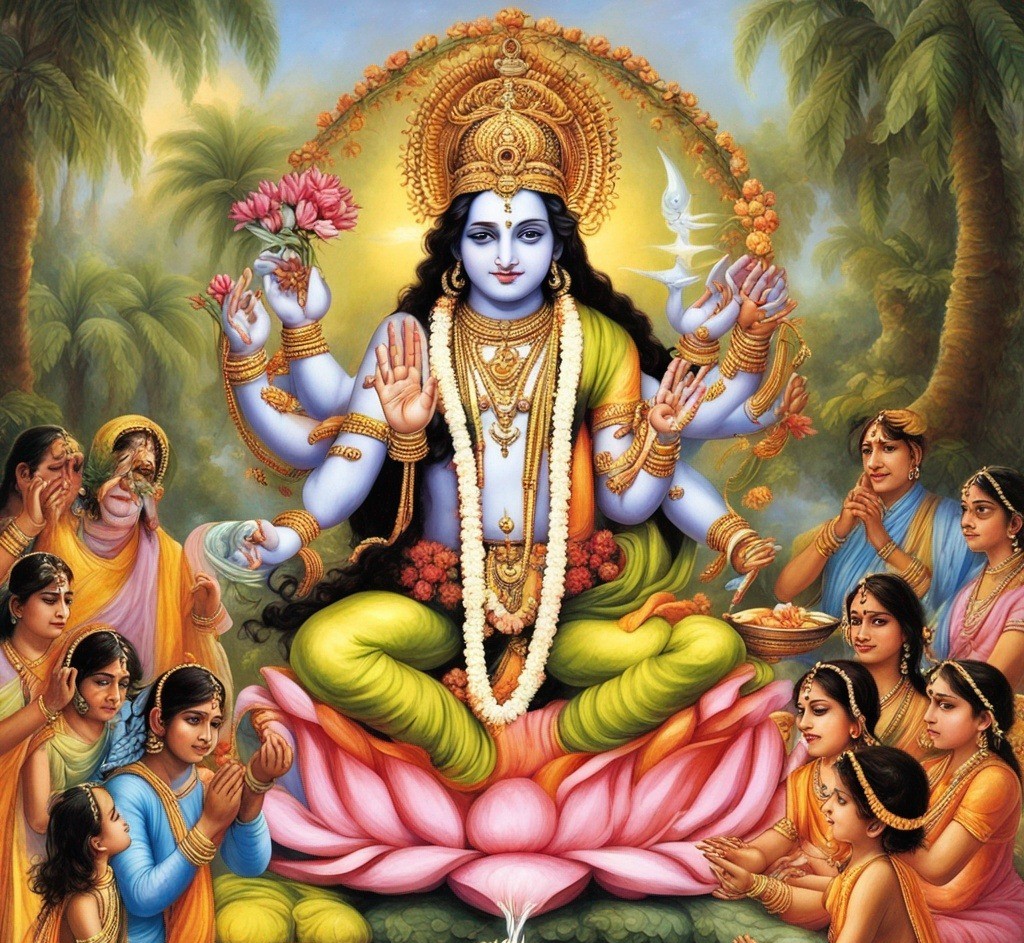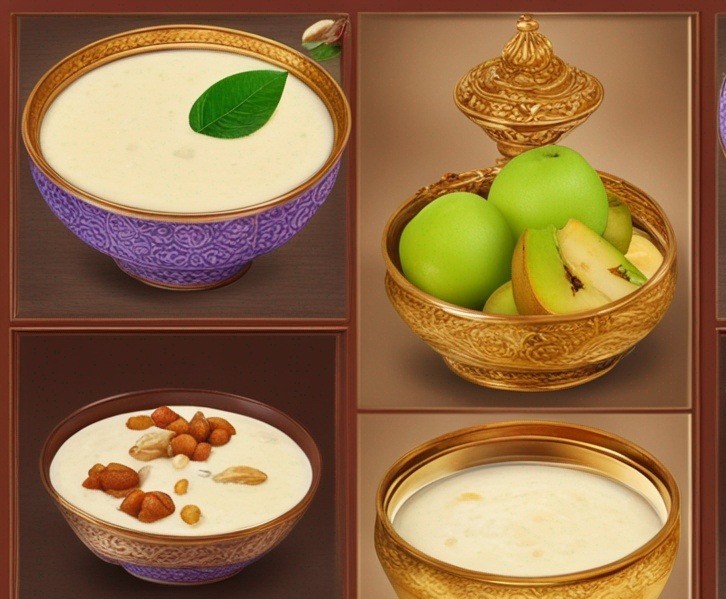Vishnu Puja

About the Puja
Vishnu Puja is a sacred Hindu ritual meant to worship Lord Vishnu, the preserver of the universe. The puja is performed by devotees in all faiths, praying for divine blessing for peace, prosperity, and spiritual enhancement. The puja usually comprises invoking different mantras on Lord Vishnu, with flower offerings and incense-lighting, presentation of prasad, and recitation of Vishnu Sahasranama. The puja is usually performed either on Thursdays or Ekadashi, being considered auspicious. Vishnu Pujas symbolizes the victory of good over evil and strengthens one's faith in dharma. A Vishnu Puja, whether performed at home or in temples, invites peace and give one's life a union with good fortune and protection.
Significance of Vishnu Puja
Vishnu Puja is significant in Hinduism because this puja worships Lord Vishnu, the guardian of the cosmos. Hindus believe that devotion to him brings prosperity, peace, and spiritual enlightenment. The followers of Vishnu offer this puja asking for his grace for success in life, stability, and protection against troubles. Prayers offered from the heart, can ward off inefficiencies of evil forces, remove obstacles, and confer wellness. Chants of the various Vishnu mantras and recitations of the Vishnu Sahasranama are effective means of drawing divine grace. The puja itself teaches that dharma, meaning right conduct or righteousness, is of utmost importance and urges the devotees to lead good lives. Cultivating this inner strength and patience surrounded by wisdom enables him to lead a plain and devoted life. Regular worship of Lord Vishnu is said to bless the devotees with spiritual upliftment, tranquility of mind, and harmony in their personal as well as professional lives. Faith strengthens, cleansing of the soul takes place, and communion with God becomes deeper with it, making it an important ceremony in the Hindu way of life.
History Behind Doing This Puja
Vishnu Puja is an extremely ancient custom of Hinduism, lying rooted deep in the Vedic scriptures and Puranic texts. Lord Vishnu is worshipped as the preserver of the universe for maintaining balance and righteousness (dharma). The initiation of Vishnu Puja dates back to the antiquity when sages and devotees performed elaborate yajnas (sacrificial rituals) and prayers for divine blessings for the safety, riches, and enlightenment of all mankind. Later, Varying styles of love gained different degrees of popularity, including Satyanarayan Puja, Ekadashi fasting, and the recitation of Vishnu Sahasranama in temples like Tirupati Balaji and Badrinath.
Offerings Made in the Puja
Vishnu Puja is performed with deep devotion, and various offerings are made to seek the blessings of Lord Vishnu. Fresh lotus and marigold flowers as well as tulsi leaves, are offered to the deity. Amongst all the offerings made to the deity, Tulsi, believed to be the most favorite of Vishnu, has particular significance in the puja. Among the offerings made by the devotees, sandalwood paste is in common use, accompanied by incense sticks, and diyas to create a purifying environment to beget divine force. Food offerings include sweets like panchamrit, variances of a mix of milk, curd, honey, sugar, and ghee, alongside fruits and kheer-a sweet rice pudding. These various offerings symbolize purity and devotion. Some other devotees serve quite a number of others yangis without onion and garlic, adding it as a naivedya. Sacred offerings include coconut, betel leaves, and nuts. This puja is generally concluded by offering Dakshina (charity) to the Brahmins or poor people, praying for the blessings of Lord Vishnu.

Vishnu Puja Vidhi
Performing Vishnu Puja involves a detailed and disciplined procedure. The following steps outline the traditional method:
Step 1- Preparation of Puja Place
Clean the puja place. Lay a clean cloth on the floor or on a table and place a wooden platform (patla) on it for the idol or picture of Lord Vishnu. Arrange flowers, incense, and a diya (lamp) around. Keep a bell, conch shell, and other required puja items at hand.
Step 2- Invocation and Sankalpa
Light the lamp and incense sticks. Sit facing the idol or image of Lord Vishnu. Say the Sankalpa (a vow or intention) that this puja be done with full devotion, to beseech prosperity, peace, and spiritual growth.
Step 3-Offering Rituals
Offer fresh flowers to Lord Vishnu, with special preference to lotus and marigold flowers. Place tulsi leaves on the idol or image, since they are dear to the Lord.
Step 4-Abhishekam(Holy Bathing Ritual)
Light incense sticks and wave them in front of Lord Vishnu. Shower water on the idol by reciting the prayers to purify and sanctify the space. This is known as Abhishekam.
Step 5- Chanting Vishnu Mantras
Recite the Vishnu Sahasranama (1000 names of Lord Vishnu), Om Namo Bhagavate Vasudevaya or other Vishnu mantras. Repeat chants with surrendering devotion, trying to focus upon each of the Lord's attributes.
Step 6 – Offerings & Aarti
Offer sweets, fruits and cooked food items to Lord Vishnu. Give panchamrit, kheer and fruits in naivedya. After offering, partake prasad with gratitude. Perform the Aarti by waving the lit lamp (diya) in circular motions in front of the idol to the song or chant of the Vishnu Aarti. This implies the dispelling of darkness and the invitation to the divine light into one's life.
Step 7-Concluding Rituals
Finally, as a concluding ritual, offerings i.e. Dakshina will be made to the Brahmins, and gratitude would be given to Lord Vishnu for his divine appearance.

Conclusion
Vishnu Puja is highly spiritual in nature, which generates blessings from Lord Vishnu for prosperity, peace, and spiritual growth. Devotees express devotion for the purpose of uniting themselves with the divine through prayers, flowers, incense, and food offerings. This act purifies the mind and soul and establishes harmony and grace in life. For continuous worship of Lord Vishnu entails balance, protection, and creativity for accomplishing desires with divine grace in life.




